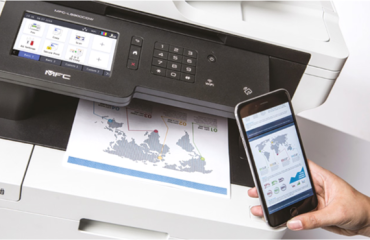
In today’s fast-paced digital landscape, Managed Print Services (MPS) have become a cornerstone for businesses seeking efficient document management solutions. However, selecting the right MPS provider can often feel like navigating a maze. With a myriad of options available, it’s essential to know what to look for to ensure your partnership yields maximum benefits. Drawing lessons from a 20 year experience in MPS and crafting a well-thought-out Service Level Agreement (SLA) can be instrumental in avoiding common pitfalls. Here’s what to consider:
Lessons Learned from Experience:
1. Underestimating Print Environment Complexity:
MPS providers often encounter diverse print environments, each with unique challenges. Past experiences have taught us that a one-size-fits-all approach rarely suffices. Look for providers who conduct thorough assessments of your print environment to tailor solutions accordingly.
2. Lack of Proactive Maintenance:
Reactive maintenance can lead to costly downtimes and disruptions. Providers should offer proactive monitoring and maintenance to identify issues before they escalate. Learning from the past, prioritize MPS partners who emphasize preventative measures.
3. Inadequate Security Measures:
With data breaches on the rise, print security is non-negotiable. Past breaches have highlighted the importance of robust security protocols within MPS solutions. Ensure your provider implements encryption, user authentication, and regular security audits to safeguard sensitive information.
4. Limited Scalability:
As businesses grow, their print needs evolve. Lessons from past MPS engagements underscore the necessity of scalability. Choose providers capable of adapting to your changing requirements, whether it’s scaling up or down, without compromising efficiency.
5. Opaque Pricing Structures:
Hidden costs and unclear pricing structures have been common grievances in MPS contracts. To avoid surprises, opt for providers offering transparent pricing models with clearly defined costs for services, consumables, and any additional charges.
Crafting an Effective SLA:
A well-crafted SLA serves as the foundation of a successful MPS partnership. Consider the following elements when drafting your SLA:
1. Performance Metrics:
Define measurable Key Performance Indicators (KPIs) aligned with your business objectives. These may include uptime, response times, resolution rates, and just-in-time supplies delivery. Clear performance benchmarks ensure accountability and drive continuous improvement.
2. Service Scope and Responsibilities:
Outline the scope of services provided, including hardware maintenance, software support, network admin assistance and application updating, supply management, and security protocols. Clarify both provider and client responsibilities to avoid ambiguity and ensure mutual understanding.
3. Response and Resolution Times:
Specify acceptable response and resolution times for different types of issues. Put enough emphasis on business critical breakdowns as opposed to non-critical ones. Average response times fall short when critical failures demand immediate attention.
4. Security and Compliance:
Emphasize security requirements and compliance standards relevant to your industry. Include provisions for data protection, access controls, and regulatory compliance to mitigate risks effectively.
5. Flexibility and Scalability:
Allow for flexibility and scalability within the SLA to accommodate changing business needs. Include provisions for scaling services up or down, adding new devices, or integrating emerging technologies seamlessly.
6. Review and Evaluation Processes:
Establish regular review intervals to assess SLA adherence and performance. These evaluations provide opportunities for feedback, improvement, and alignment with evolving business priorities.
7. Technological Advancements and Integration Capabilities:
Assess the MPS provider’s commitment to technological innovation, such as Data Capture Automation (DCA) and Enterprise Resource Planning (ERP) integration. A forward-thinking provider leverages these advancements to streamline workflows, enhance supply chain efficiency, and empower staff with seamless access to printing resources. Look for integration capabilities that bridge the gap between printing infrastructure and business processes, optimizing resource allocation and improving overall productivity.
In short, selecting the right MPS provider requires careful consideration and proactive planning. By learning from past experiences and incorporating lessons into a well-defined SLA, businesses can mitigate risks, optimize performance, and foster successful long-term partnerships. Prioritize transparency, flexibility, and alignment with your organizational objectives to ensure your MPS provider meets your present needs and evolves with your future aspirations.


